Embarking on a journey as a student, whether through studying abroad or taking a gap year, is a transformative experience that offers far more than just academic enrichment. You’ll explore new cultures, languages, and perspectives that challenge and expand your worldview. This guide will help you navigate the myriad opportunities available for student travelers, offering insights into destinations that are rich in educational value and personal growth. From the historic campuses of Europe to the vibrant landscapes of South America, each destination provides a unique backdrop for learning and adventure. Whether you’re seeking to enhance your studies or take a meaningful break to discover your passions, this guide is your compass to navigating the exciting world of student travel.
1. Oxford, United Kingdom
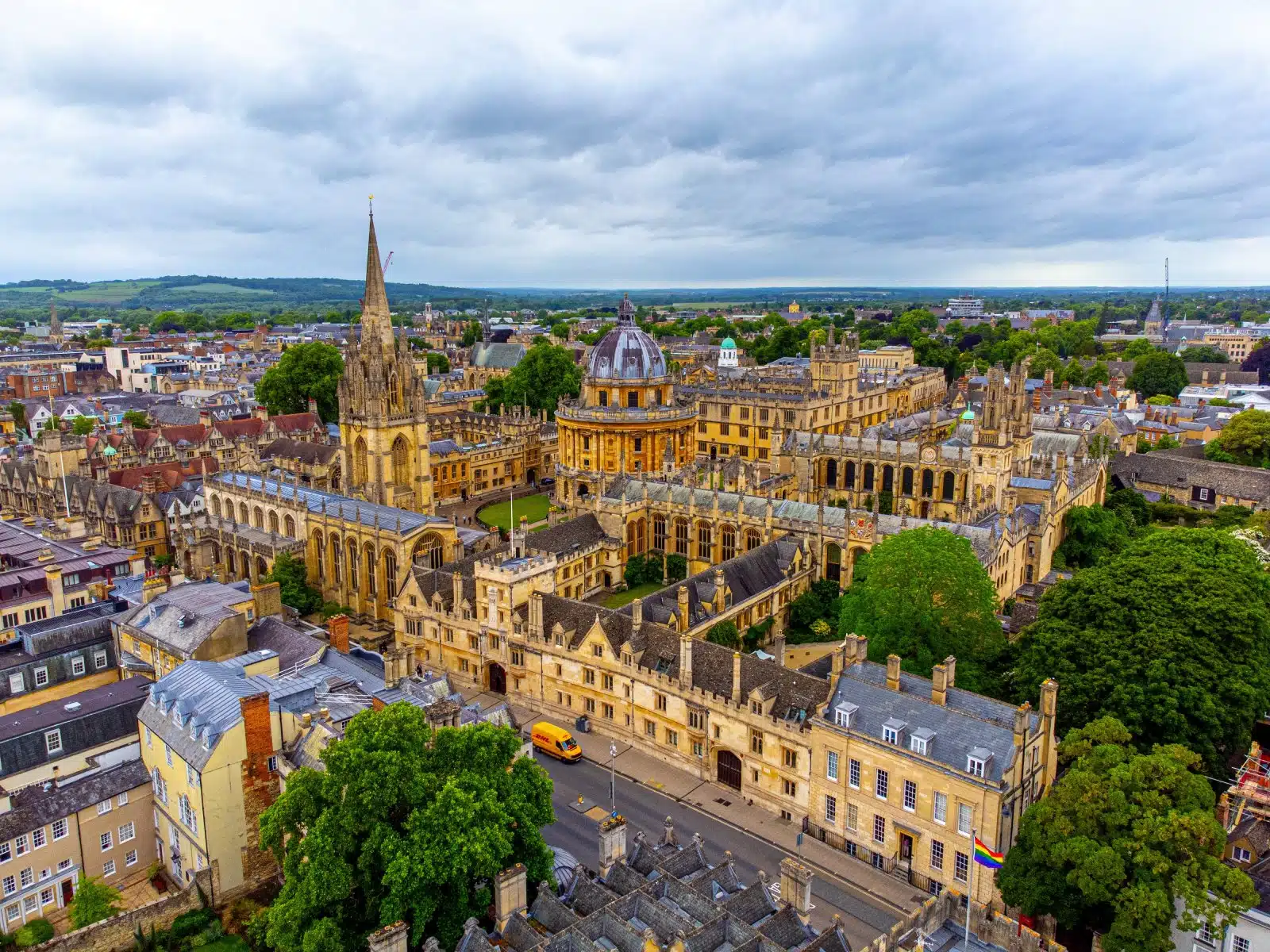
Image Credit: Shutterstock / 4kclips
Oxford, the epitome of academic excellence, offers students a chance to walk in the footsteps of some of the world’s most brilliant minds. The city’s prestigious university, with its centuries-old colleges, provides a backdrop for a unique study abroad experience combining rigorous academics and rich historical traditions. Oxford’s cobbled streets, bustling markets, and verdant meadows offer a picturesque setting for personal exploration. Students can engage with local and international scholars, participate in formal hall dinners, and participate in lively debates, making their educational journey holistic.
Insider’s Tip: Take advantage of the Oxford Union, which often hosts talks and debates by world leaders and celebrities, providing a unique extracurricular learning opportunity.
When to Travel: The academic year runs from October to June, with short breaks in December and March. The summer months offer various short courses and programs.
How to Get There: Oxford is well-connected by train and bus to London, with Heathrow and Gatwick airports providing international gateways.
2. Tokyo, Japan

Image Credit: Shutterstock / GrooveZ
Tokyo, a city where tradition meets futurism, offers students an immersive cultural and educational experience. From studying the Japanese language to engaging in technology and business programs, Tokyo’s universities and language schools cater to a wide array of interests. The city itself is a living classroom, where students can explore ancient temples, modern skyscrapers, and vibrant pop culture scenes. Participating in university clubs or local exchange programs can enhance language skills and provide insights into Japanese customs and lifestyle.
Insider’s Tip: Join a university circle or club, a great way to meet local students and immerse yourself in Japanese culture, from tea ceremony clubs to sports teams.
When to Travel: The Japanese academic year starts in April, with some programs offering fall admissions. Summer programs are also available for short-term students.
How to Get There: Tokyo is served by two major airports, Narita and Haneda, both offering extensive international connections. The city’s public transportation system is efficient for getting around.
3. Buenos Aires, Argentina

Image Credit: Shutterstock / Svetype26
Buenos Aires, known as the “Paris of South America,” is a vibrant city that offers students an enriching cultural experience. It’s an ideal destination for those interested in Latin American studies, Spanish language, and tango dancing. The city’s universities, including the University of Buenos Aires, provide diverse programs with community engagement and service learning opportunities. Buenos Aires’ rich literary history, lively arts scene, and bustling cafés provide a stimulating environment for students outside the classroom.
Insider’s Tip: Explore the city’s historic bookstores and attend a milonga (tango event) to truly immerse yourself in the local culture.
When to Travel: The academic year in Argentina runs from March to November, with the southern hemisphere’s seasons opposite those of the northern hemisphere.
How to Get There: Buenos Aires is accessible via its international airport, Ministro Pistarini (Ezeiza), with direct flights from major cities worldwide. The city’s comprehensive bus and subway system makes navigation easy.
4. Florence, Italy

Image Credit: Shutterstock / gillmar
Florence, the cradle of the Renaissance, offers art history and fine arts students a once-in-a-lifetime opportunity to study amidst the world’s most renowned artistic treasures. The city’s numerous art schools and institutes provide hands-on learning experiences in painting, sculpture, and fashion. Florence is an ideal setting for Italian language and culture students, offering a deep dive into Italy’s rich historical and culinary heritage. Living and studying in Florence allows students to explore iconic sites like the Uffizi Gallery, the Duomo, and the Ponte Vecchio, turning the city into a living campus.
Insider’s Tip: Engage in a language exchange with local students to enhance your Italian skills while sharing your own language and culture.
When to Travel: Academic programs run throughout the year, with many art and language courses offering flexible start dates. Spring and fall semesters offer milder weather and fewer tourists.
How to Get There: Florence’s Amerigo Vespucci Airport offers European connections, while the nearby Pisa and Bologna airports provide wider international access. The city’s central location in Italy makes it easily reachable by train.
5. Berlin, Germany

Image Credit: Shutterstock / posztos
Berlin, a city that has witnessed profound historical events, is a vibrant hub of creativity, innovation, and education today. It’s an ideal destination for students interested in history, politics, art, and sustainability. The city’s universities and cultural institutions offer a wide range of English programs catering to international students. Berlin’s rich cultural tapestry is evident in its street art, diverse culinary scene, and numerous museums and galleries. The city also serves as a living laboratory for sustainable urban living, with its extensive public transportation network, green spaces, and commitment to renewable energy.
Insider’s Tip: Take advantage of the city’s extensive bike lanes to explore Berlin like a local, discovering hidden gems beyond the iconic landmarks.
When to Travel: The academic year typically starts in October. However, Berlin’s cultural and social scene thrives year-round, offering enriching experiences whenever you visit.
How to Get There: Berlin is primarily served by Berlin Brandenburg Airport (BER), with extensive flight connections. The city’s excellent rail network also offers direct trains from major European cities. Long-distance buses are a budget-friendly option.
6. Cape Town, South Africa

Image Credit: Shutterstock / Ilonde van Hoolwerff
Cape Town is not just a stunningly beautiful destination; it has deep historical roots and a vibrant cultural scene, making it a compelling choice for students interested in environmental science, history, and social justice. The city’s universities offer programs that engage with South Africa’s complex socio-political landscape, providing a rich educational experience. Cape Town’s natural beauty, from the iconic Table Mountain to the rugged Cape Peninsula, is an incredible backdrop for biodiversity, conservation, and sustainable development studies.
Insider’s Tip: Participate in community service projects to better understand Cape Town’s social challenges and contribute positively to the local community.
When to Travel: The academic year in South Africa starts in February, but Cape Town’s mild climate makes it a great destination.
How to Get There: Cape Town International Airport (CPT) connects the city globally. From the airport, taxis, shuttles, or the MyCiTi bus service provide easy access to the city center. Cape Town is also reachable by national highways, long-distance buses, and luxury trains like the Blue Train.
7. Montreal, Canada
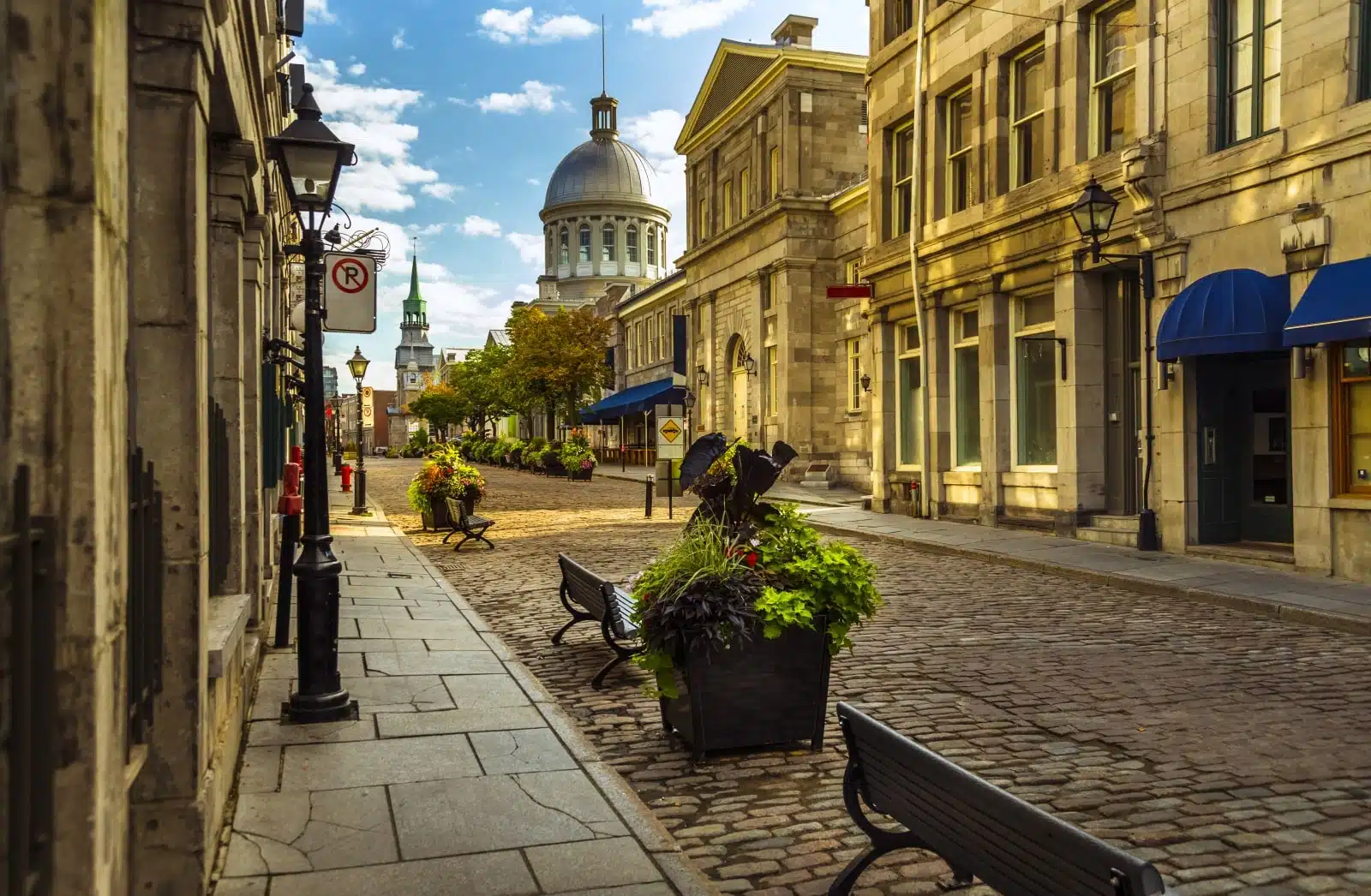
Image Credit: Shutterstock / ProDesign studio
Montreal, a bilingual city with a unique blend of North American and European influences, offers a dynamic setting for students. Known for its world-class universities, vibrant arts scene, and inclusive atmosphere, Montreal particularly appeals to those studying French language, music, film, and AI technology. The city’s festivals, from the International Jazz Festival to the Just for Laughs Comedy Festival, provide endless entertainment and learning opportunities outside the classroom.
Insider’s Tip: Immerse yourself in Montreal’s bilingual culture by practicing your French in local cafés and markets, enhancing your language skills in a real-world setting.
When to Travel: While academic programs run year-round, Montreal’s summer festivals make June to August a fascinating time to visit.
How to Get There: Montréal-Pierre Elliott Trudeau International Airport (YUL) offers numerous flights from North America and beyond. Downtown is accessible via taxi, airport shuttle buses, or the 747 bus line. Montreal is also connected by rail to Canadian cities and the US.
8. Seoul, South Korea
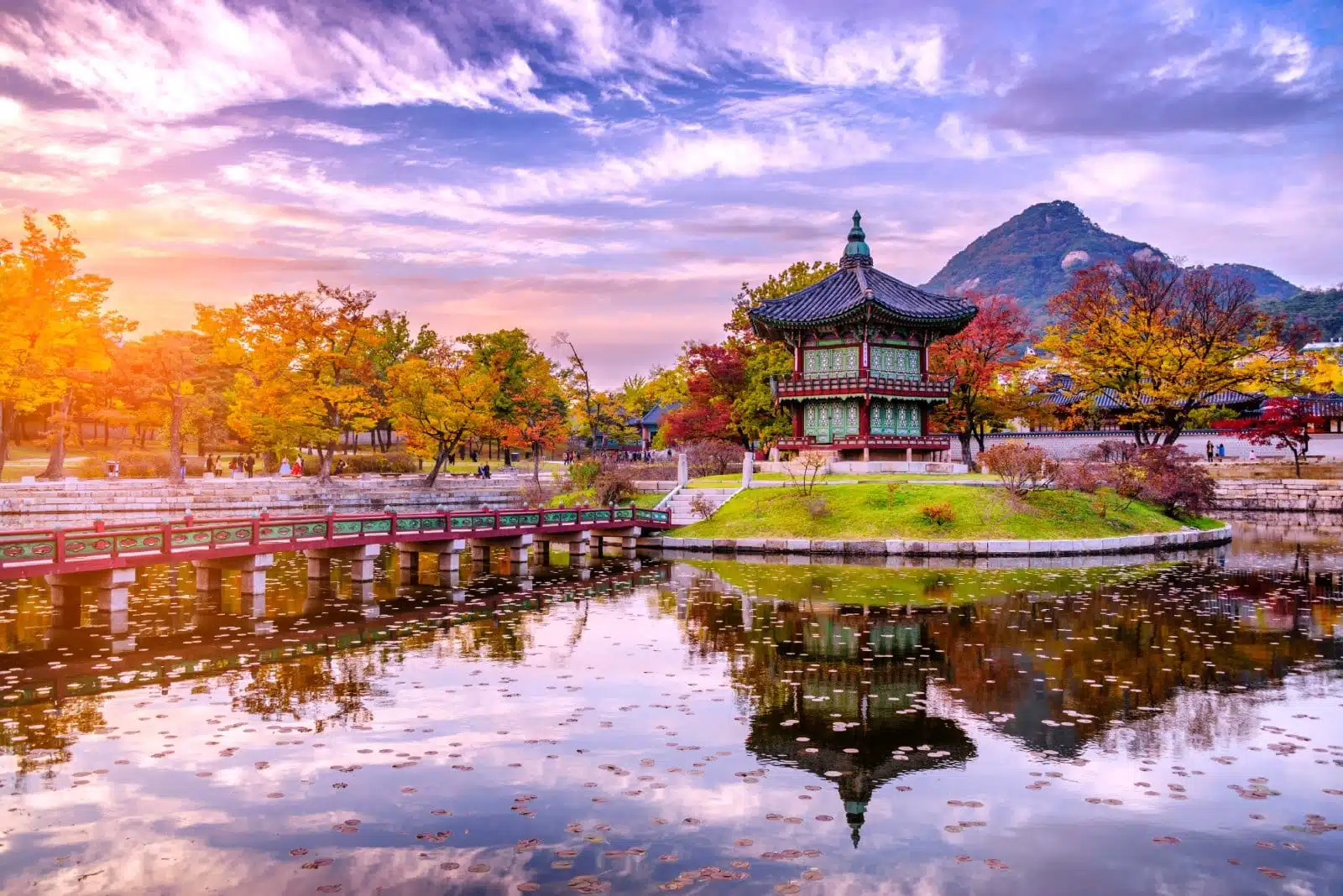
Image Credit: Shutterstock / TRAVEL TAKE PHOTOS
Seoul, a city where ancient palaces stand alongside towering skyscrapers, offers a fascinating study-abroad experience for students interested in technology, business, and Korean language and culture. The city’s universities are known for their high academic standards and innovative research. Seoul’s vibrant street food scene, K-pop culture, and historic sites like the Gyeongbokgung Palace provide a rich cultural immersion experience. Seoul’s commitment to technological advancement and sustainability can also be seen in its smart city initiatives and green spaces.
Insider’s Tip: Explore Seoul’s traditional markets and Hanok villages to experience the city’s rich heritage and contrast it with its modern urban landscape.
When to Travel: Spring (March to May) and fall (September to November) offer pleasant weather and beautiful natural scenery, making it an ideal time for exploration.
How to Get There: Incheon International Airport (ICN) is the main hub, with the AREX express train and airport buses linking it to Seoul. Gimpo Airport (GMP) caters to domestic and some international flights, providing additional access.
9. Sydney, Australia
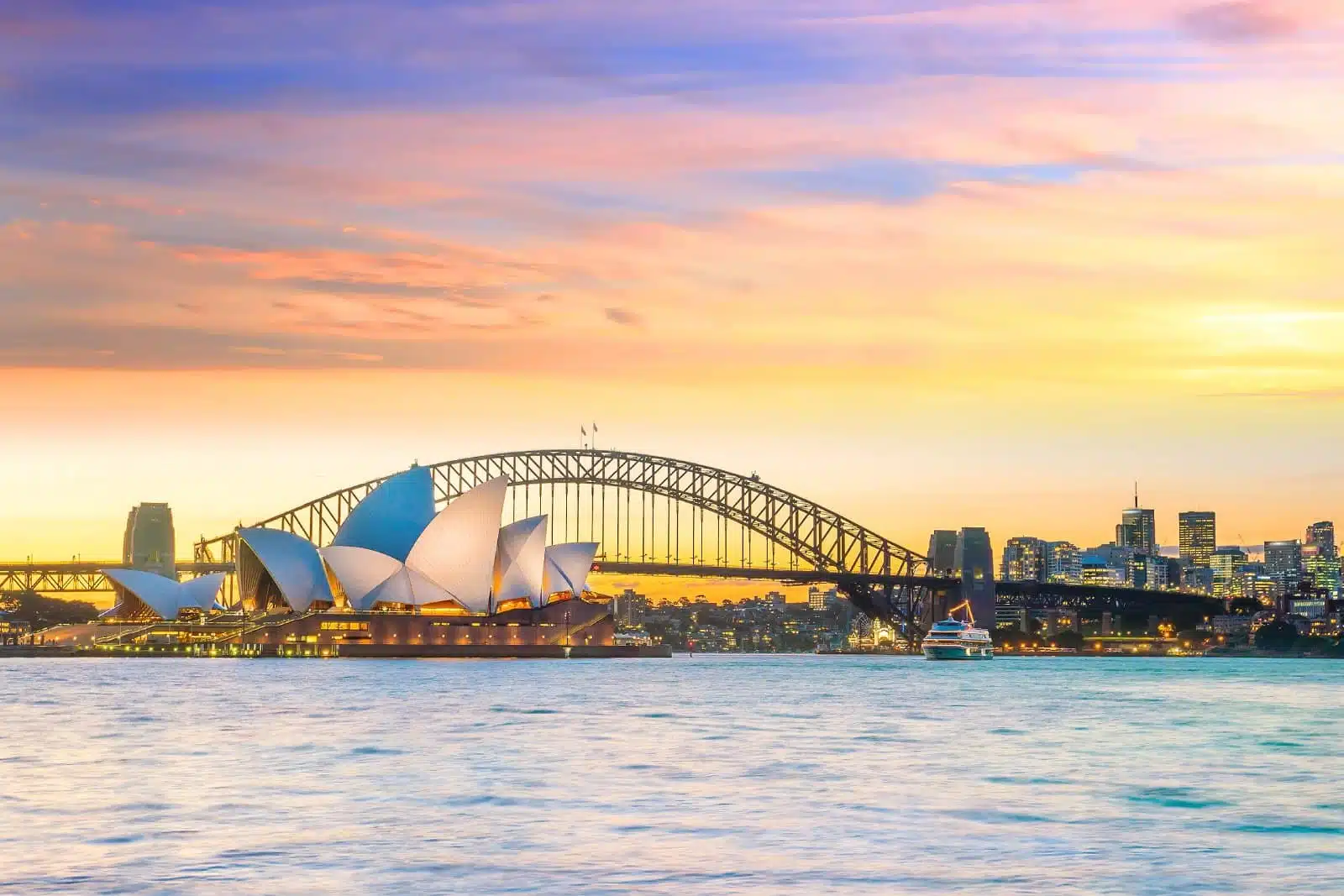
Image Credit: Shutterstock / f11photo
Sydney, known for its iconic Opera House and Harbour Bridge, is also a leading destination for students seeking a blend of outdoor adventure, cultural diversity, and academic excellence. The city’s universities offer a wide range of programs focusing on marine biology, environmental sciences, and business. Sydney’s natural harbors, beaches, and national parks provide a unique outdoor classroom for students, while its multicultural neighborhoods offer a global culinary and cultural experience.
Insider’s Tip: Take advantage of Sydney’s outdoor lifestyle by joining university clubs focused on surfing, hiking, or sailing to fully experience Australia’s love for adventure and nature.
When to Travel: The academic year in Australia starts in February, but Sydney’s temperate climate makes it a welcoming destination year-round.
How to Get There: Sydney Kingsford Smith Airport (SYD) is well-connected globally. The Airport Link train, buses, taxis, and rideshare services offer convenient transfers to the city. Sydney’s public transport facilitates city and regional exploration.
10. Santiago, Chile
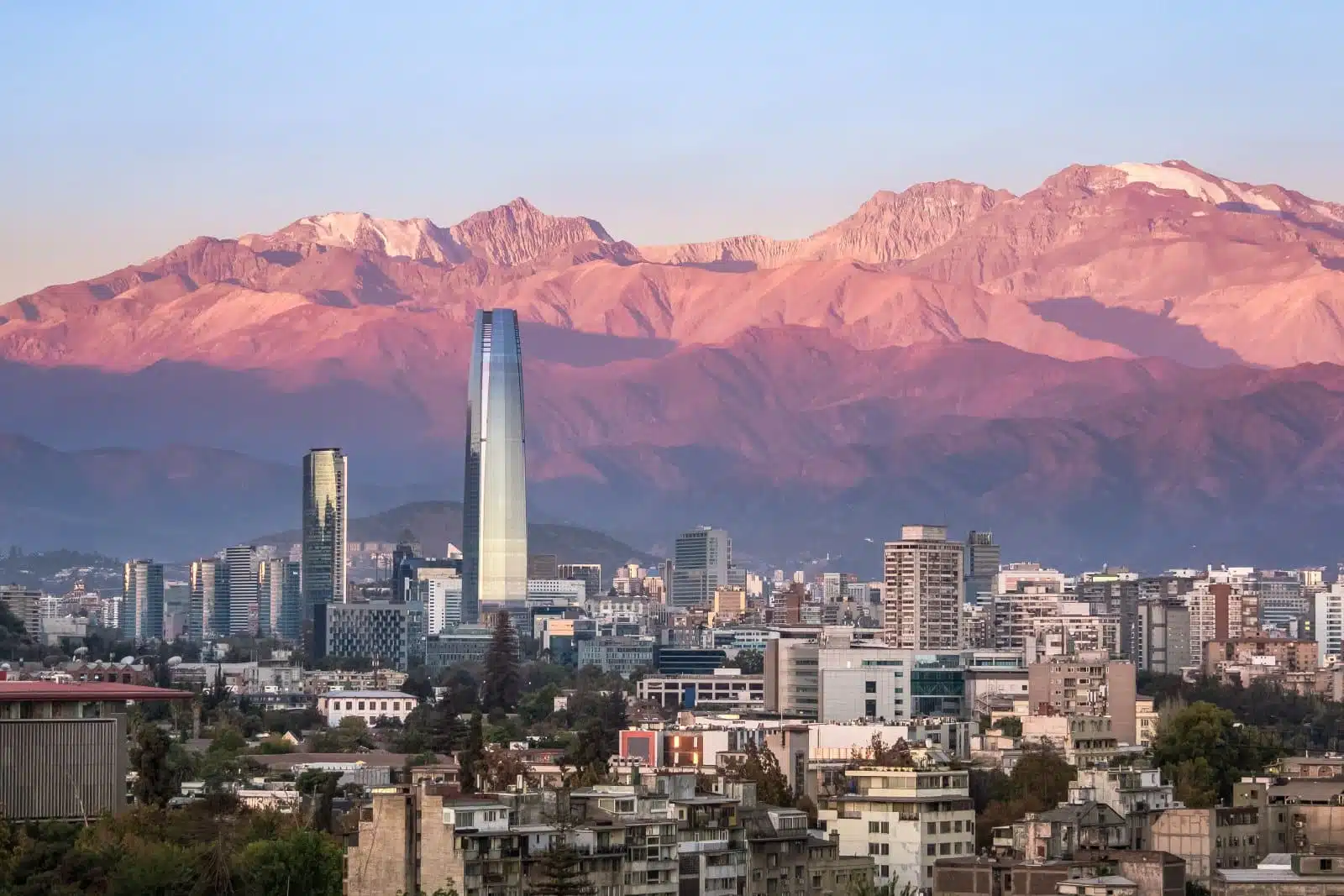
Image Credit: Shutterstock / Diego Grandi
Santiago, nestled in the Andes’ foothills, offers a compelling mix of urban sophistication and natural beauty, making it an attractive destination for students interested in Latin American culture, Spanish language, and environmental studies. The city’s universities are engaged in addressing the region’s social, political, and environmental challenges, providing meaningful academic pursuits. Santiago’s proximity to the mountains and the sea allows for various outdoor activities, complementing the academic experience with adventure and exploration.
Insider’s Tip: Explore the nearby Andean trails and vineyards to experience Chile’s stunning landscapes and world-renowned wines.
When to Travel: The best time to visit Santiago is during the spring (September to November) or fall (March to May) for mild weather and fewer crowds.
How to Get There: Arturo Merino Benítez International Airport (SCL) is the primary airport, with direct flights from the Americas, Europe, and Oceania. Airport shuttle buses, taxis, or the Delfos bus service connect the airport to downtown Santiago. Long-distance buses are available from neighboring countries.
The Bottom Line

Image Credit: Shutterstock / Prostock-studio
Choosing to study abroad or take a gap year is a decision that opens up a world of opportunities for personal growth, academic achievement, and global understanding. Each destination offers unique lessons, challenges, and rewards, inviting you to step out of your comfort zone and engage with the world in new and meaningful ways. As you embark on this journey, remember that the true value of your experience lies in the connections you make, the perspectives you gain, and the impact you leave behind. Embrace each moment, stay curious, and let your travels shape you into a more informed, compassionate, and engaged global citizen.
More From The Green Voyage
12 Best Practices for Sustainable Travel in 2024 – How to Travel With Minimal Environmental Impact
Unlocking Hotel Perks – A Traveler’s Guide to Maximizing Hotel Reward Programs for Optimal Benefits
Travel Hacks for Frequent Flyers – 6 Tips and Tricks to Make the Best of Air Travel
The post Studying Abroad and Gap Year Guidance 2024 first appeared on The Green Voyage.
Featured Image Credit: Shutterstock / Jacob Lund.
For transparency, this content was partly developed with AI assistance and carefully curated by an experienced editor to be informative and ensure accuracy.
Tips for Trip Success
Book Your Flight
Find an inexpensive flight by using Kayak, a favorite of ours because it regularly returns less expensive flight options from a variety of airlines.
Book Your Hotel or Special Accommodation
We are big fans of Booking.com. We like their review system and photos. If we want to see more reviews and additional booking options, we go to Expedia.
You Need Travel Insurance!
Good travel insurance means having total peace of mind. Travel insurance protects you when your medical insurance often will not and better than what you get from your credit card. It will provide comprehensive coverage should you need medical treatment or return to the United States, compensation for trip interruption, baggage loss, and other situations.Find the Perfect Insurance Plan for Your Trip
